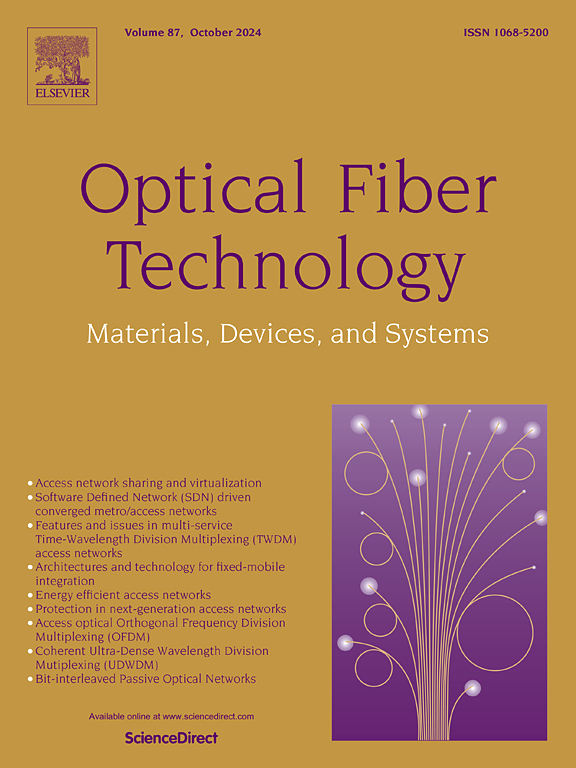Optimizing design of inorganic scintillator optical fiber X-ray sensors
IF 2.6
3区 计算机科学
Q2 ENGINEERING, ELECTRICAL & ELECTRONIC
引用次数: 0
Abstract
In this paper, two approaches have been adopted to optimize the design of optical fiber X-ray sensors (OFXS). One approach involves using the hemisphere tip structure OFXS, while the other considers increasing the embedding depth of the scintillator in the embedded structure OFXS. The four OFXS designs considered include a 1 mm diameter hemispherical tip structure as well as embedded structure OFXSs with embedding depths of 1 mm, 3 mm, and 5 mm. Experimental results indicate that all four OFXSs exhibit a dose linearity above 0.999938 and dose rate linearity above 0.99991. The optical signal generated by hemisphere tip structure OFXS is 2–3 times higher compared to the embedded structure OFXSs. In the case of the embedded OFXS, increasing the embedding depth cannot effectively improve its sensitivity. And when measuring percentage depth dose (PDD) characteristics, no significant difference was observed for the four OFXSs. In addition, compared to the PDD curve measured using ionization chamber (IC), all OFXS exhibit an over-response phenomenon. These results show that the over-response phenomenon is not related to the structure of OFXS or the volume of scintillator, but only to the scintillator material. Therefore, subsequent calibration of OFXS needs to focus on studying the luminescence characteristics of the scintillator.
无机闪烁体光纤 X 射线传感器的优化设计
本文采用了两种方法来优化光纤 X 射线传感器(OFXS)的设计。一种方法涉及使用半球形尖端结构 OFXS,另一种方法则考虑增加闪烁体在嵌入式结构 OFXS 中的嵌入深度。考虑的四种 OFXS 设计包括直径为 1 毫米的半球形尖端结构以及嵌入深度为 1 毫米、3 毫米和 5 毫米的嵌入结构 OFXS。实验结果表明,所有四种 OFXS 的剂量线性度均高于 0.999938,剂量率线性度高于 0.99991。半球形尖端结构 OFXS 产生的光信号是嵌入式结构 OFXS 的 2-3 倍。对于嵌入式 OFXS,增加嵌入深度并不能有效提高其灵敏度。在测量深度剂量百分比(PDD)特性时,四种 OFXS 没有发现明显差异。此外,与使用电离室(IC)测量的 PDD 曲线相比,所有 OFXS 都表现出过响应现象。这些结果表明,过响应现象与 OFXS 的结构或闪烁体的体积无关,而只与闪烁体材料有关。因此,OFXS 的后续校准需要重点研究闪烁体的发光特性。
本文章由计算机程序翻译,如有差异,请以英文原文为准。
求助全文
约1分钟内获得全文
求助全文
来源期刊

Optical Fiber Technology
工程技术-电信学
CiteScore
4.80
自引率
11.10%
发文量
327
审稿时长
63 days
期刊介绍:
Innovations in optical fiber technology are revolutionizing world communications. Newly developed fiber amplifiers allow for direct transmission of high-speed signals over transcontinental distances without the need for electronic regeneration. Optical fibers find new applications in data processing. The impact of fiber materials, devices, and systems on communications in the coming decades will create an abundance of primary literature and the need for up-to-date reviews.
Optical Fiber Technology: Materials, Devices, and Systems is a new cutting-edge journal designed to fill a need in this rapidly evolving field for speedy publication of regular length papers. Both theoretical and experimental papers on fiber materials, devices, and system performance evaluation and measurements are eligible, with emphasis on practical applications.
 求助内容:
求助内容: 应助结果提醒方式:
应助结果提醒方式:


